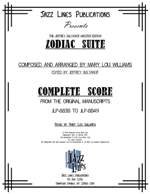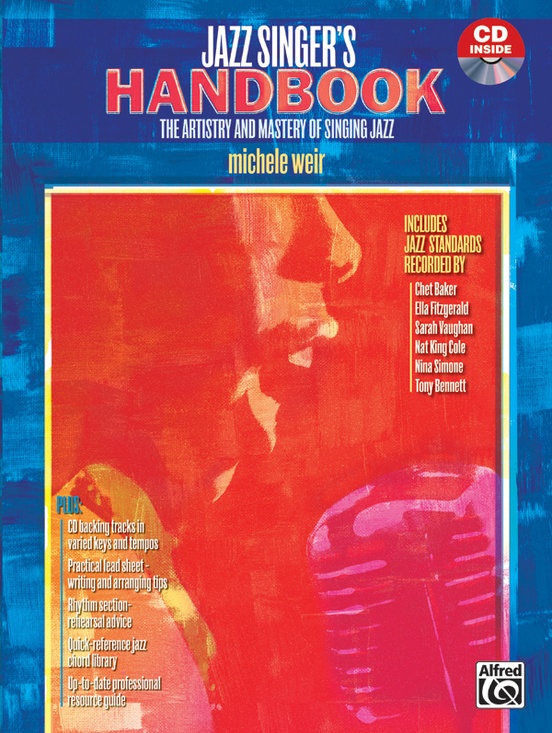ZODIAC SUITE [COMPLETE SCORE]
Composed and Arranged by Mary Lou Williams, Prepared for Publication by Jeffrey Sultanof

Cat #: JLP-8835S
$100.00This item usually ships within 1 business day.
Questions?
Please call +1-518-587-1102 or email us.
Edition: Studio Ensemble Arrangement Score
Description: Difficult
Publisher: Jazz Lines Publications
An important piece of American Music History is finally available for performance and study! This multi-movement work takes about 30 minutes for performance. The movements correspond to the 12 zodiac signs: Aries, Taurus, Gemini, Cancer, Leo, Virgo, Libra, Scorpio, Sagittarius, Capricorn, Aquarius, and Pisces.
Background (from the forward by Jeffrey Sultanof):
In 1945, Mary Lou Williams was playing at a club called Café Society, owned by Barney Josephson. She also had a weekly radio program. Josephson suggested that she write something ambitious for the radio show, and she wound up conceiving a suite based on the signs of the zodiac. The individual pieces were to honor her friends born under each of the signs. It was Josephson who conceived of a concert of the suite, and produced it at Town Hall on New Year’s Eve day of 1945.
Mary Lou recorded the entire suite with a trio for Asch Records (which later became Folkways); these masters are now owned by the Smithsonian Institution and are easily available. Williams orchestrated the suite for chamber orchestra and premiered this version at the Town Hall concert with her teacher Milt Orent conducting from one-line conductor parts (these may be in his handwriting). There was very little rehearsal, and Williams wound up playing a couple of the movements as piano solos, even though they’d been fully orchestrated. The experience was not a positive one for her. By the end of the concert, she was upset and frustrated. Gathering up all of the music, she left the hall quickly, and as far as is known, this version of the Zodiac Suite was never played again during her lifetime.
I continue to do independent research on concert music in various forms that is either jazz and pop flavored or has jazz soloists, from James Reese Europe and Paul Whiteman to Duke Ellington, John Graas and beyond. When I began this research back in 1972, much of this music was unavailable. The Zodiac Suite was in Mary Lou’s possession, as well as all of her other music (archivist Anne Kuebler noted that Williams kept nearly everything, from dry cleaning receipts to napkins with the names of songs on them given to her as requests when she appeared at a club). Based on the trio recordings, this suite held great fascination for me for a variety of reasons: Williams was already an established composer/arranger/pianist, and this was her first attempt at writing for orchestra. She was also growing as a musician and composer based on her music studies.
Acetates made at the concert were lost for many years, but they turned up and became available on CD. They revealed the performance of the Zodiac Suite to be dominated by Williams’s piano, with contributions by tenor saxophonist Ben Webster, clarinetists Eddie Barefield and Edmund Hall, and trumpeter Irving “Mousie” Randolph. In spite of some obvious moments where the ensemble was ragged or did not come in on time, the piece seemed to come off well.
With due respect to performances, which obviously bring the music to life, the source materials (in this case the original scores and parts) are the direct communication to the conductor and musicians to realize the wishes of the composer in the case of a concert work. When I was finally able to examine the existing sources of the Zodiac Suite, they revealed an intriguing and probably disturbing experience for the composer. Their various problems certainly explain why Mary Lou Williams was upset at concert’s end, and perhaps why this version was probably never performed again in her lifetime. In fact, she originally had great ambitions for the Zodiac Suite, orchestrating three movements for full symphony orchestra, which were played at a concert at Carnegie Hall. She may have abandoned further work on Zodiac based on her disappointment at Town Hall, only to adapt a few of the movements when she appeared with Dizzy Gillespie’s Orchestra for a 1957 appearance at the Newport Jazz Festival.
Some of these problems were caused by her inexperience in the concert arena. The music is sometimes written in keys such as E Major, Db Major and even Gb Major, creating major problems with regard to blending and intonation.
More importantly, the score has numerous note errors, transposition errors, missing notes, sections with unnecessary accidentals, and confusion over the alto and tenor clefs for viola and bassoon parts, all typical of a novice orchestral composer. These sorts of errors can also be found in manuscripts of her big band compositions as well, particularly when she copied the parts herself. When extracting the parts for Zodiac, copyist Al Hall did not question many of these errors, and introduced mistakes of his own. Williams also changed some of the music during rehearsals; these fixes were marked in the parts by the musicians themselves. It is obvious that the one-line conductor parts were written out last; they reflect the way the music was played at the concert, telling us that musical decisions were ‘locked in’ by performance time. This forward serves to document the most salient issues that needed to be dealt with so that this music could be published and performed.
Williams wound up cutting some of the orchestration partly due to the rubato nature of many of the movements, and the resulting inability of the orchestra to play in synchronization with the piano. In addition, the numerous copy errors were never fully ironed out, forcing her to make additional cuts; if someone wanted to use the parts for future performances, they would have to have been heavily edited and corrected. In two cases, the orchestration was cut altogether and these movements were played as piano solos. Except for solo passages, the piano parts were written as condensed scores in the full scores, and Williams frequently played along with the instrumentalists to ‘cover’ them during sections that were meant to be played by the orchestra only. Some pieces had to have musical changes that ultimately caused them to be cut in performance (Aquarius has instances where bars are added and rhythms rewritten; one change had been caught before the parts were copied, others were done after the fact. Ultimately the relevant sections were not played.)
When the participants are gone and there is no one to consult to make key decisions, an editor of historic music must make judgments and assumptions to properly serve the music. With regard to the Zodiac Suite, I have taken the attitude that the scores that were written by Williams were the way she ultimately wanted the work to be played, and whatever cuts that she made for the Town Hall performance were temporary so that the piece could be presented (however, there are instances where she made musical revisions, such as harmonies). As a result, the editorial work needed was to clarify rhythms, fix incorrect pitches and transpositions, and make the dynamics consistent (instead of an overall dynamic if woodwinds and brass are playing together, Williams tended to write different dynamics for each instrument in an attempt to indicate sonic balances. This can tend to be confusing, so it has been fixed here). In only one instance have I altered the orchestration, and this is an addition to bring out a musical line; it can be omitted at the conductor’s discretion.
The most important decision was to omit the piano ‘coverings’ of the sections where instruments are playing solo lines or harmonies, as the piano tends to swallow instrumental colors, particularly in the case of smaller ensembles in performance. Williams’ orchestrations deserve to be heard in all their glory, not doubled by the piano. This approach also highlights the sections where the piano is the solo voice, helping it to stand out.










